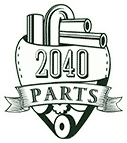5pcs Double Contact Automotive Relay 80a 12v 5 Pin Jd1914 Transparent Shell on 2040-parts.com
Wenzhou, default, China
5pcs Double contact automotive relay 80A 12V 5 pin JD1914 transparent shell |
Relays & Sensors for Sale
 5pcs double contact automotive relay 80a 12v 4 pin jd1912 transparent shell(US $10.49)
5pcs double contact automotive relay 80a 12v 4 pin jd1912 transparent shell(US $10.49) 300a steel high-current relay contacts 12v waterproof seal automobile dc(US $26.56)
300a steel high-current relay contacts 12v waterproof seal automobile dc(US $26.56) 500a dc contactor large current relay total power 24v authentic modified car(US $32.07)
500a dc contactor large current relay total power 24v authentic modified car(US $32.07) Zl180 normally open electromagnetic current 200 a dc12v 4 pin auto starter relay(US $11.07)
Zl180 normally open electromagnetic current 200 a dc12v 4 pin auto starter relay(US $11.07) Powerful starter relay car modified gear motor install starter relay 12v 150a(US $9.45)
Powerful starter relay car modified gear motor install starter relay 12v 150a(US $9.45) Ultra dl-7 universal lock module(US $21.99)
Ultra dl-7 universal lock module(US $21.99)
Audi Q5
Thu, 24 Apr 2008Audi has chosen the Beijing Motor Show to unveil its new mid-sized Q5 SUV. The newcomer's exterior design is a thoroughly orthodox development of current Audi themes: a mix of Avant and Q7 ideas housed in a deeper body section than one is used to seeing. The rear relates most strongly to the Q7, with its full-width powered tailgate design, where the tail lamps open with the tailgate and auxiliary lamps in the bumper house the mandatory lamp functions.
Porsche makes £14k on every car it sells, Bentley makes £12.7k
Fri, 14 Mar 2014Porsche made £14k on every car sold in 2013 If you need an illustration of how much more profitable high-end sports and luxury cars are than mainstream cars, VW Groups sales figures demonstrate it perfectly. At the extreme ends of the profit per car spectrum, Porsche made an enviable £13,931 for every car it sold in 2013 and VW made just £615 (although SEAT actually lost £330 on every car it sold) . In fact, although you might expect the higher-priced Bentley range to make more per car than a Porsche, Bentley only managed a creditable second place on VW Group’s profit per car table, turning in £12,700 profit for every car it turned out (11,000 of them in 2013).
Concept Car of the Week: Honda Kiwami (2003)
Fri, 11 Apr 2014As part of Honda's exploration into new, clean-performing technologies, the Kiwami concept was created to test public acceptance of the idea of a large, fuel cell-powered luxury sedan. Unveiled in 2003, the simple yet striking design seemed like a Japanese twist on the Renault Vel Satis concept, which shared a similar wedge profile, wide stance and minimalist approach. However, the Kiwami found its own interpretation of modern luxury, expressed through elegantly integrated technology rather than with crystal champagne glasses. Up front, a full-width LED strip headlamp sat flush with the flat bonnet and the rectangular bumper to create a design of primitive beauty. Further examples of the same simple Japanese aesthetic are found around the car, including the uncluttered body panels and a full-width tail-lamp graphic that matched the front theme. The dramatic proportions of the interior were closely related to the package of the hydrogen power plant. Unlike other manufacturers at the time, Honda engineers did not create a 'skateboard' fuel cell chassis below the cabin. Instead, a sideways H-shaped layout for the control unit, ultracapacitor, fuel cell stack, hydrogen storage and other components was used, helping to create a lower center of gravity.

